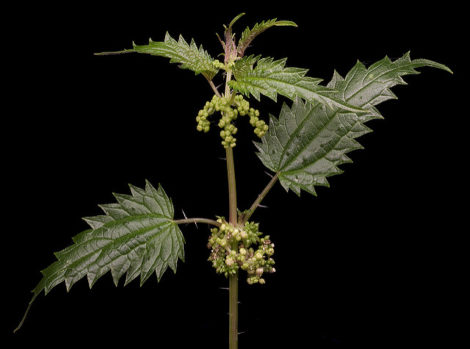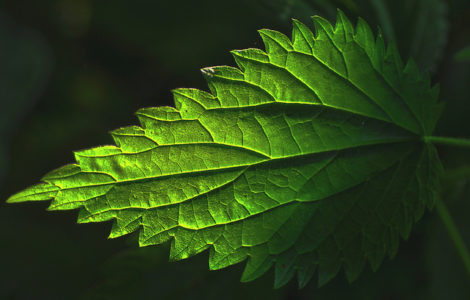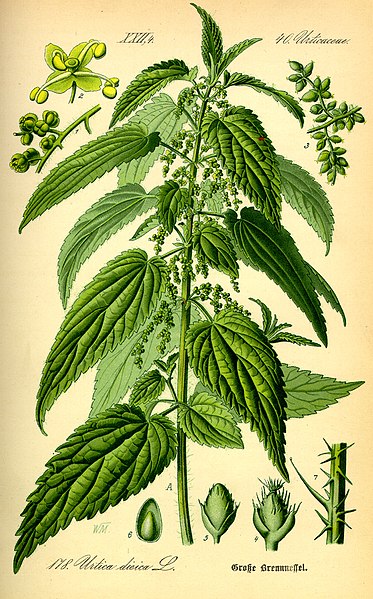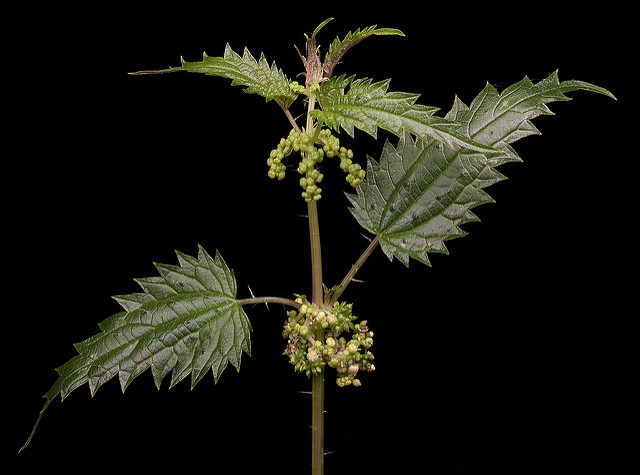
“…when Julius Caesar landed at Romney, the soldiers brought some of the nettle seed with them, and sowed it there for their use, to rub and chafe their limbs, when, through extreme cold, they should be stiff and benumbed.” (William Camden, 1607) Photo: Kevin Thiele
In Romanian tradition, the stinging nettle (Urtica dioica) is a symbol of virility and abundance. From its ritualistic use in folk magic, traditional medicine, festive cuisine, and even Romanian toponomy, nettle has long been regarded as a plant imbued with mystical and protective powers.
Gathering nettles was, and still is to some degree in rural areas, a ritualistic act, as women chanted charms before plucking them. Eating the first nettles of the season was accompanied by ritual words, such as “new food in the old mouth,” transforming the ordinary act of nourishment into a sacred ritual of renewal.
Where the nettle grows
A member of the Urticaceae family, nettle is a hardy, perennial, flowering plant native to Europe, northern Africa, Asia, and western North America. Its Romanian name urzica comes from the Latin word urere, meaning “to burn,” a reminder of the sting felt when touching its tiny hairs. Since antiquity, Romans, Greeks, and many others have used nettle for healing, cooking, and even making dyes. Nettle tea was a trusted cure for colds, chest pain, and sore throats, and it remains a popular remedy to this day.
Stinging nettles are remarkably resilient, taking root wherever the soil is rich and disturbed. Their deep, spreading rhizomes allow them to anchor firmly, forming dense clusters that can quickly dominate a patch of land. This tenacity reflects their fiery, untamable nature in folklore, where nettles are often called the “weed of Mars,” the Roman war god and patron of agriculture. With its stinging hairs for defense and resilience against cold and drought, nettle is one of the first plants to emerge after the winter snow melts, as a living fire in the garden that awakens the land and those who encounter it.
Fertility rituals and sacred meals

Nettle-infused water was traditionally used to wash the face and hair for its fortifying properties.
Because they appear with the first signs of spring, nettles were considered sacred, and so they were eaten to rejuvenate the body, but only on special days such as Hag Days (March 1–9), Passion Week, and Easter Saturday. The first nettle meal of the season was often accompanied by a magical formula: “May my womb hurt when the woman will birth foals, and the mare will birth children,” making the ordinary meal a ritual food for fertility and renewal.
In The Holidays of Romanians, S.F. Marian wrote: “The nettle is fed to the mouth of hunger, says a popular proverb, meaning that the poor satisfy their greatest, harshest, and most relentless enemy, hunger, by eating it. However, starting on Holy Thursday, even the poor can no longer enjoy this plant, because on this day it is the “wedding” of the nettles, that is, from this day the nettles begin to bloom and are no longer good to eat. In Muntenia, nettle is highly sought after by villagers, because as a young and somewhat tasty plant, it is a true delicacy during the strictness of Lent. It is eaten as soup with a few grains of rice or as wilted nettles with grated horseradish.”
In spring rituals, nettles were believed to reawaken the inner fire, the virility, fertility, and strength of the body. One such ritual is “nettling”, performed on Saint George’s Day (April 23-24), described by S.F. Marian:
“From the morning of Saint George’s Day until sunset, boys and girls, young men and young women, would roam around wherever they pleased. Each person kept their hands behind their back and tried to strike the other with a nettle, because on this day, it was also the time of nettling. […] According to popular belief, only those who are nettled on Saint George’s Day can become truly quick, agile, hardworking, and skillful over the course of the year. […] After everyone has tired themselves with running and nettling, they all return home. There, each person begins to boast about how many times they struck others and how they themselves were hit only by accident or at unforeseen moments, recounting it again and again.”
Nettle water was likewise considered as potent as the plant itself, especially in beauty rituals. For example, on Easter morning, washing the face with virgin water containing a red egg, a coin, and a nettle leaf was believed to give cheeks as red as the egg, strength as solid as the coin, and resilience as tough as the nettle. Likewise, on May 1, girls gathered nettles early in the morning, boiled them in water, and rinsed their hair with it for growth and strength.
In addition to the healing and magical uses of the nettle leaf, its stems were harvested for textile fibers, making it an indispensable resource in traditional Romanian life and folk magic.
The Nine Herbs Charm

Stinging Nettle, mentioned in the 9 Herbs Charm and Agrippa’s De Occulta Philosophia as a Martial plant that irritates the skin, was a popular remedy in ancient times.
The stinging nettle is one of the ingredients in the Nine Herbs Charm for infections and poisoning from the 10th-century AD Lacnunga manuscript. Alongside nettle, the charm calls for mugwort, cockspur grass, lamb’s cress, plantain, mayweed, crab-apple, thyme, and fennel.
The herbs were crushed and mixed with old soap, apple juice, and a paste of water and ashes. Fennel was boiled into the mixture and coated in beaten egg both before and after applying it as an ointment. The charm was sung three times over each herb, and into the patient’s mouth, ears, and wound before the treatment was given.
The verses treat each herb like a living being, praising its strength against disease and poison:
“Nettle it is called, it attacks against poison,
It drives out the hostile one, it casts out poison.
This is the herb that fought against the serpent,
It has power against poison, it has power against infection,
It has power against the loathsome foe roving through the land.
Put to flight now, Venom-loather, the greater poisons,
Though you are the lesser, until he is cured of both.”
Far from being a simple backyard weed, prickly and bothersome, nettle truly is one of the most thoroughly documented plants in traditional herbalism, valued for its remarkable healing properties as much as for the myths that surround it.
From folk remedies to modern science
The old custom of “nettling” may seem unusual today, but it reflects a real property of the plant. Modern research has confirmed that stinging nettle contains compounds with strong anti-inflammatory effects, and clinical studies suggest it can help reduce pain and stiffness in conditions such as rheumatoid arthritis. Although nettling itself is not a recommended therapy, extracts from the plant can influence blood vessels and may support healthy circulation and energy levels. However, it should only be taken under medical supervision, as some people may have allergic reactions to it or it may interfere with other medications or underlying conditions.
Nettle continues to be revered in traditional medicine for its versatility and restorative qualities. It has long been used to support women’s health, improve hair strength, and provide nutrients during times of seasonal scarcity. These traditional uses, passed down through generations, are finding support in modern science today, as the humble nettle continues to be considered a potent, health-promoting plant.

www.Nettlesgarden.com – The Old Craft



Rachel | April 5, 2018
|
Beautiful I loved this!
Radiana Piț | April 5, 2018
|
Thank you! We are delighted to read that. 🙂
Maria | April 5, 2018
|
I drink tea is a wonderful along time!
Radiana Piț | April 5, 2018
|
That is wonderful to read. Thank you for sharing! 🙂
Pupoqui | April 8, 2018
|
If Radiana says it is so, then it is so.
Radiana Piț | April 8, 2018
|
That’s a whole lot of a trust! 🙂 Thank you!